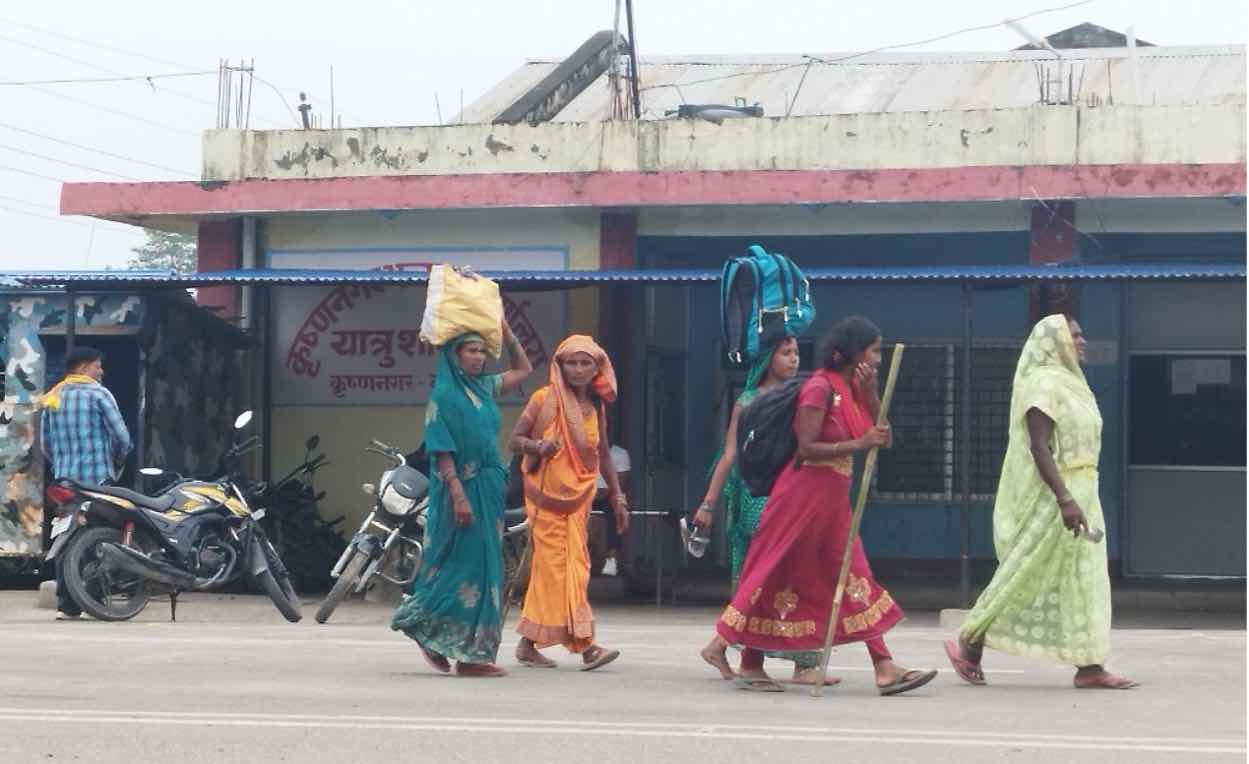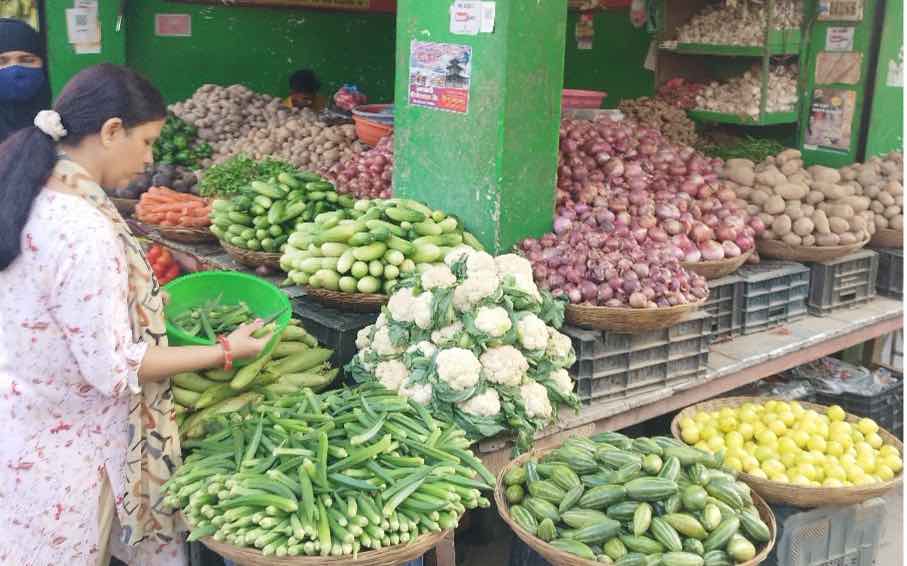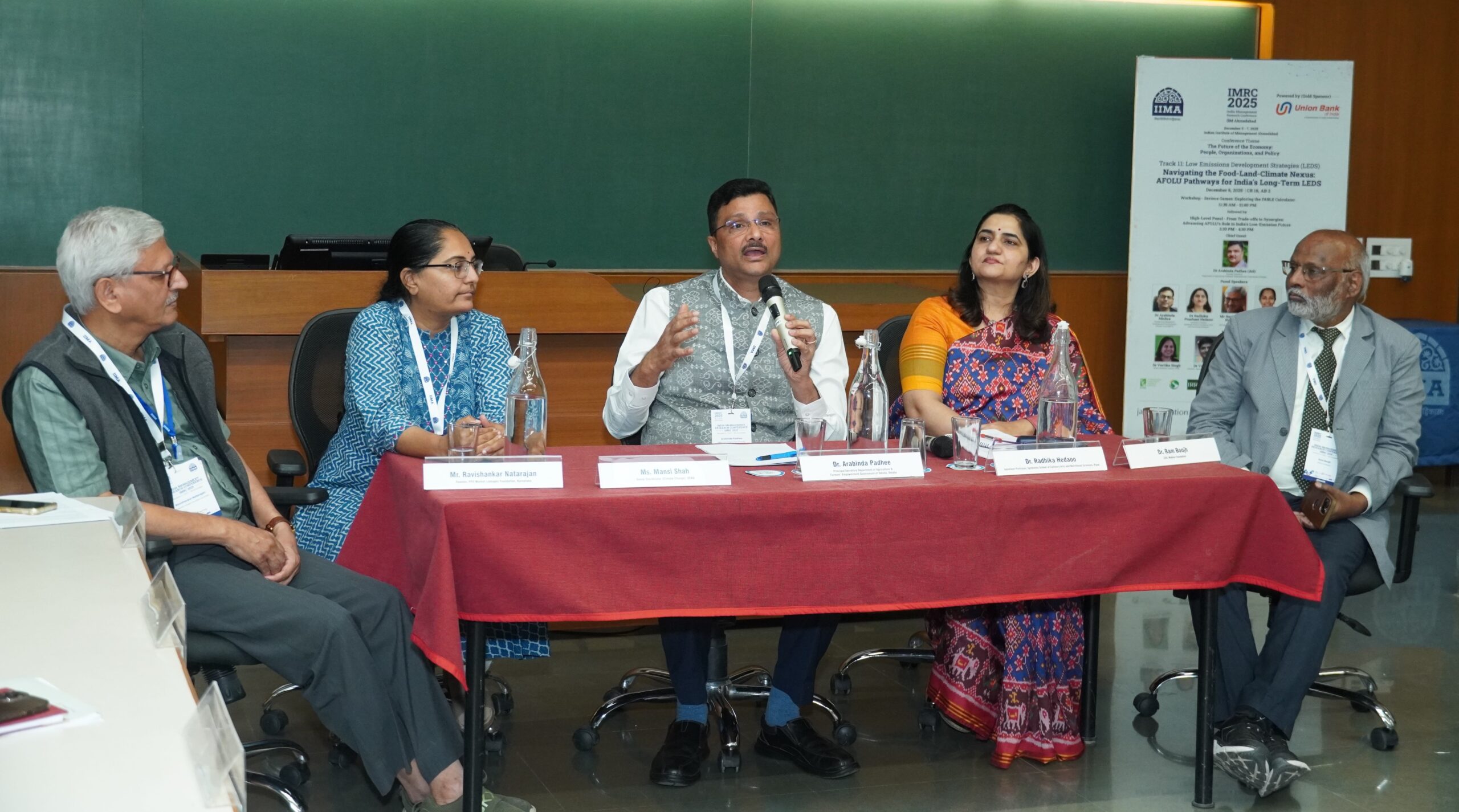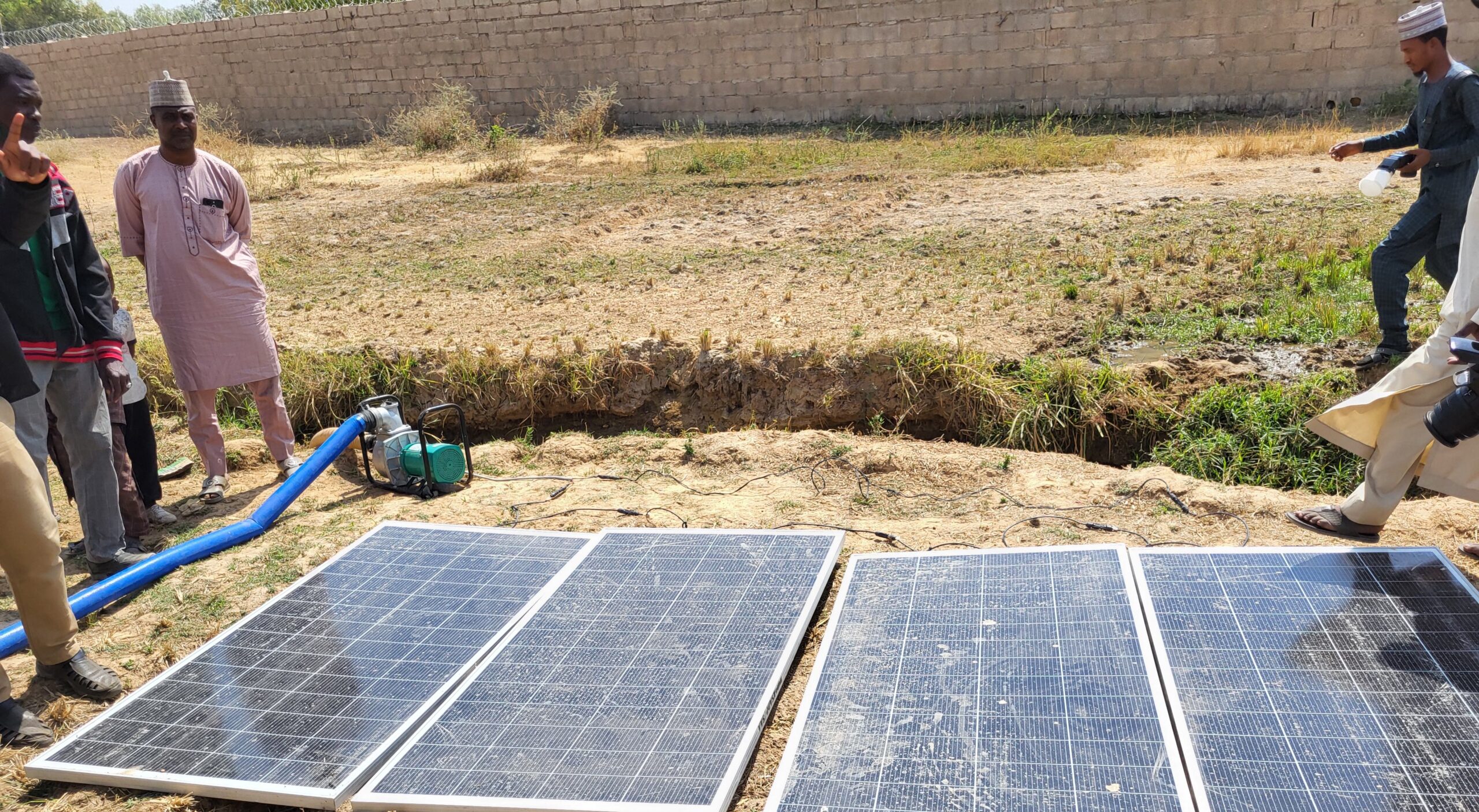Nepal and India share a porous open border of about 1850 km with 27 customs offices. Local citizens from either side are allowed to cross, usually without even having to produce identity papers, purchase items and return home. The economies in the border towns are highly dependent on these consumers—more so in case of Nepalese consumers patronizing Indian markets. Border officers usually allow passage when the perceived values of the goods are up to an acceptable but not precisely defined limit—that is, when convinced that the items are for home use.
However, this informal system was disrupted this year when Nepal’s Ministry of Finance introduced a new provision in its FY 2023-24 budget to charge customs duties on imports of any goods valued above NPR 100 ($0.75); the rule was implemented in an arbitrary fashion by border control officers starting in July.
Shalini Gupta
Sign mentioning mandatory customs clearance for items purchased for commercial as well as home-use (including weddings and religious events) at Krishnanagar Customs Office, Lumbini Province, Nepal.
The government is tightening its borders to make up for declining revenues—customs tariffs accounted for 21.7% of the government’s total revenue in FY 2021/22 and fell to 18.1% in FY 2022/23—as well as to discourage imports and boost local markets. However, given the historical interdependence of the two economies and their long land borders, these new rules have proven nearly impossible to enforce. India’s share in Nepal’s imports in formal trade was 63% as of August 2023; the shares and volumes of informal trade are only likely to be higher.
In this blog post—based on some preliminary qualitative field data gathered from major custom points in Nepal—we explore possible drivers and dynamics of this informal trade, its makeup and organization, how networks with customs authorities help to shape it, and some of its economic outcomes.
The shape of India-Nepal informal trade
Informal trade—like most forms of trade—takes place due to price differences between two markets. The greater the price wedge between the Nepal and India markets, the greater the spur to trade. The magnitude of price gaps varies significantly across commodities. Sizable gaps exist in prices of essentials like sugar; in September, the cross-border difference in sugar prices ranged up to NPR 40-45 per kg (with lower prices on the India side). Thus, the motivation for trade in such essential commodities is quite pronounced, and trade barriers only accentuate the differences. In case of sugar, the Nepal government applies a customs duty of 30% and VAT of 13%.
India’s current array of agricultural trade barriers—imposed in response to supply disruptions stemming from the Russia-Ukraine war and other problems—are another factor affecting informal trade. India has been tightening its supply of rice to the international market, as well as to Nepal, in order to maintain its domestic supply. It has imposed quotas and even outright bans on exports of some staples such as paddy and rice. Trade is also affected by Nepal’s import duties; prior to India’s rice export ban, informal traders sought to avoid Nepali trade measures including an agriculture reform fee of 9% and the advanced income tax of 2.5%, leading to a total duty of 11.5% on rice imports. In its FY 2023/24 budget, the government also introduced VAT of 13% on some vegetables, including onions and potatoes.
A respondent in Madhesh Province explained how the market players were bypassing the government’s various tariffs, taxes, and fees (while still charging higher prices to consumers): “In India, the retail price for onion is INR 100 (NPR 160, or $1.20) per 5 kg and it is NPR 260 per 5 kg in Nepal. So, anybody with a cycle would go and bring it from India. Even the shopkeepers do it because of the profit margin of 100 rupees. When importing formally, the cost may come to around NPR 220- 230, but informally, one can bring at NPR 160, and with an additional cost of, say about 20-40 rupees for the carrier, the total cost comes to NPR 200. So, you save 60 rupees.”
There are advantages in opting to bring in small quantities of goods informally rather than exploiting economies of scale using vans or trucks to formally import large volumes. The benefit of lower unit costs in transportation of the latter approach is easily offset by the array of taxes and fees.

Shalini Gupta
A group of women carries items across the border.
Livelihoods from “carrying” goods
“Carrying” or informally transferring goods has become a full-time profession for many poor families living close to the towns along the Nepal-India border. “Carriers,” many of them women, collect the goods on the India side and bring them in via the open border, escaping the formal custom entry points—sometimes on foot, sometimes on bicycles and motorbikes, and always at their own risk. In some cases, carriers operate individually and supply bags of items, such as rice, to retail shops in border towns, keeping a small margin; in others, they are mobilized by specific traders on both sides of the border. Carrying of sacks of cereals or large-volume goods is mostly done by men in bicycles or motorbikes and women typically commute on foot, carrying smaller items, often in groups. Sightings of groups of women being interrogated by border police officers and seizing the goods they carry have become common now that the borders are being tightened.
In some cases, traders have hired groups of over 100 carriers who complete five or more rounds back and forth from the border per day. Carriers have also brought in high-value items like dried fruits and spices such as jeera (cumin seeds). A respondent in Madhesh Province said that cashews were easily imported informally to avoid the customs duty of NPR 500 ($3.75) per kg. Carriers saved the extra margin of NPR 500 as income; thus carrying 5 kg of cashews every day generated a daily income of NPR 2500 ($19).
However, carriers get lower margins with some traders; on average, carriers make anywhere between 500 to 2500 rupees per day. Such incomes are comparable to, or better than, Nepal’s 2021-22 annual per capita disposable income of $1724—roughly NPR 630 per day. Thus, informal trade has become an important livelihood in the border areas.
The scale of informal trade
Interviews suggest that while evading customs by bringing in vegetables on cycles or in small baskets may appear quite modest, the scale of such informal trade is quite high. A trader in Lumbini Province said: “Vegetables are not being brought in bulk informally, only in small quantities, and usually through the secondary custom points (choti bhansar). They [the traders] make all the necessary arrangements with the police and customs. Between 50-200 people may be involved in bringing vegetables in this area; they may be bringing 2-3 bags of vegetables each day. The police often stop them, take some bribe and then lets them go. Corruption is the grease rather than sand in the wheel that runs this system. This trend has reduced after COVID.”
Unfettered mobility, an essential requirement for informal trade, was substantially obstructed by COVID-19 lockdowns and other restrictions, and there still is inertia in the system. Informal trade in vegetables was mostly limited to local consumption and sale in the border towns, as COVID-related delays in transport time for longer-distance trade created problems particularly for perishable items.
Health and safety issues
However, informal trade raises several other concerns—particularly for food products. As such goods enter the market evading customs duties, they also bypass formal testing and certification processes, meaning there can be health and food safety risks for consumers.
But the formal inspection procedures have their own problems. While some formal traders follow due process and provide the required quarantine checked certificates from both the India and Nepal sides when procuring agrifood items, including vegetables, customs officers interviewed said that the unavailability of adequate technical human resources and lab testing infrastructure at some custom points are a common problem.
One officer in one of the smaller customs offices in Lumbini Province said they were forced to “turn a blind eye” to imports of vegetables as their lab facility was out of service because technicians were unavailable, and that other customs points were understaffed and could not carry out the testing either. (One such facility in Kailali District in western Nepal closed on August 13, disrupting imports.) Such shortcomings thus raise questions on the quality of even formally-traded consumables.
Impacts of recent changes
Concurrent efforts by the governments of India and Nepal to control informal trade have met with opposition from the locals on either side of the border. In Biratnagar (Koshi Province), a respondent expressed resentment over the double standards of customs officials: “They make the common people ‘criminals’ if bringing in items for over 100 rupees, but at night the border is open for larger traders. As someone said, at night, even elephants can be brought in through customs if there were sufficiently large price differentials. In case of food items, like a sack of rice, being carried for consumption, it is not even possible to get formal customs clearance because they will need to get the sample tested in lab to import formally.”
Cereals pose far fewer concerns for food safety and health, and their informal trade is the natural outcome with large arbitrage opportunities. While informal trade through customs checkpoints appears to have declined in response to the new duties, particularly for cereals it continues via other routes.
While in the Bhairahawa customs (Lumbini Province), an official of the Custom Agents Association noted a significant decline in the flow of informal carriers: “Last Dashain [a major Hindu festival in Nepal celebrated around October], the volume of informal trade was quite high. Before the introduction of rule of charging customs duty for goods over NPR 100, the number of people bringing items informally may be 400-500, now it has come down to 100.”
Yet in Birgunj (Madhesh province), a key respondent summed up the existing loophole of the provision: “107 km of our border is open border in Birgunj area and that is where they bring in the goods informally. The recent policy to charge customs duty on items more than 100 rupees would not affect those importing informally—they just avoid the formal customs and continue their activities from other routes.”
Customs stations have thus become sites of shifting ad-hoc negotiations between consumers, traders, and customs officials, at times involving persuasion, bribery, or evasion. The arbitrariness in law enforcement has created room for corruption in allowing passage of goods of questionable standards, or that evade customs duties or other levies. This informal economy has implications for the livelihoods of a large mass of people involved in the task of “carrying” items as well as the traders, both big and small, involved in such trade. Given these complexities, it is not clear whether formalization of trade is substantively feasible—or more importantly, even optimal from an economic or development perspective, unless the benefits of health and safety considerations outweigh the costs.
Shalini Gupta is a Researcher with the Institute for Integrated Development Studies, Nepal; Devesh Roy is a Senior Research Fellow with IFPRI’s Development Strategies and Governance Unit.
We thank USAID for funding support to undertake this study under the Cereal Systems Initiative for South Asia (CSISA)’s ‘Building food system resilience to global supply chain and climate shocks in Nepal’ work. CSISA’s work in Nepal is also strategically aligned with the One CGIAR Regional Integrated Initiative Transforming Agrifood Systems in South Asia (TAFSSA). The project is led by CIMMYT and implemented jointly with IFPRI, IRRI, and IWMI. International Development Enterprises (iDE) is another key partner of CSISA in Nepal and Bangladesh. We especially thank Paras Kharel, Dikshya Singh, Sita Adhikari, Roopali Bista, Mamata Pradhan, Sunil Saroj, and Abul Kamar for their unwavering support throughout this study. The views expressed here are those of the authors and do not necessarily reflect the views of the donor or the authors’ institutions. The usual disclaimer applies.







